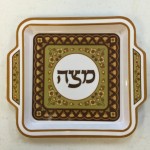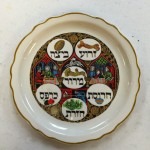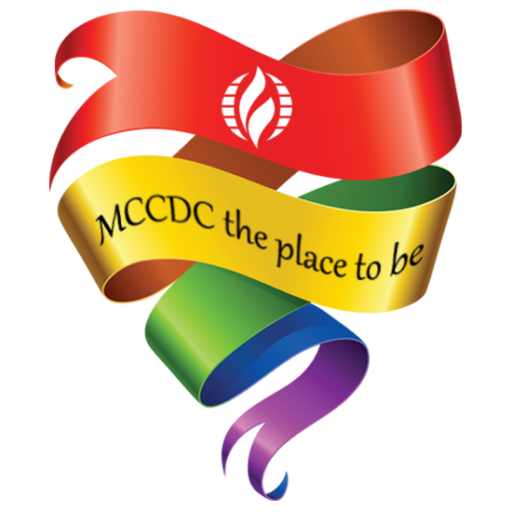Week 2 of our Bible in 90 Days Discussions. Please joins us as we read along. For more details on reading the Bible in 90 days, please visit our main page.
There is no audio recording for Week 2.
- Animal sacrifice, lots of it
- Comments many were disturbed by all the killing of animals. How did they have anything left to eat? Didn’t understand the need for the sacrifice of life and all the bloodshed. But, what they offered is actually about 10 percent. Thinking that from the census there were over 600,000 men, with women and children population may be been over 1 million.
- Are they sacrificing a small amount of their total herds/kept animals?
- That food or sacrificial animals may have been set aside for the Levites/Priests
- Blood sacrifice related to other religions or religious practices
- Cattle and herds were food and like money and they must have had a lot of them so putting it perspective, sacrificing a portion of that may not be as significant as it seems. It was to give the best to the Lord, provide for the Levitical or priest share, and perhaps feel the pain of offering best for sin or atonement. A lot of religions at that time with all sorts of sacrifices at that time and blood was a very sacred substance — blood.
- Someone pointed out it was fascinating seeing human attributes attributed to God — “aroma pleasing to the Lord”
- Clean vs unclean statements, in the midst of all of the regulations of homes and skin diseases
- There seemed to be a lot of things that were unclean. Mold, skin diseases, etc…Priests seemed to act like a physician. He was doing what a physician might do in examining skin. But, if the intent was to minimize disease and illness many of the instructions seemed rationale particularly at a time people did not understand about germs and microbes etc… And, some of it, many still follow today such as how we deal with mold or people who view kosher food as more healthy. Food — unclean versus clean…but new testament says all God created is good to eat. But, shellfish are bottom feeders…there’s greater risk with shellfish.
- Priests as physicians, or taking on the duties of checking various parts of life
- Also, viewing legal regulations through our eyes today. Even some of the legal regulations (dealing with civil or criminal disputes) are similar to what we require today
- Making sure you have witnesses to an event
- Judge or arbiter systems
- Cleansing rituals prescribed for various life situations (menstruation, nocturnal emissions)
- Prescriptions for food
- It was noted the first reference to man should not lie with man as lie with woman…also the mention of male prostitutes.
- It was noted the male prostitute reference, referred to both male and female prostitutes and specifically shrine prostitutes – some of the other religions that worshipped idols had shrine prostitutes. The story of Sodom was also highlighted mentioning the rape of Lot’s male visitors. Some responses were that the context is about survival and multiplication of the people. So, those things not focused towards procreation was considered sin. Also, as part of conquering raping men was sometimes used as an act of humiliation. Also, because other nations were doing it, the Israelites were being distinguished.
- A man lying with a man passage may refer to:
- multiplication of people, the community, non-procreative sex
- historical context, male rape from invading tribes/nations
- It seems many of the laws were for a specific purpose and time given the context. For example, it says do not marry your sister, yet Abraham and Sarah we are told were also siblings. It also said any kings should not have too much wealth and that they should not marry foreign wives, yet we will read later that one of the greatest kings of Israel was Solomon who also was the wealthiest and have many foreign wives.
- Confusing how it says to not marry or have relations with relatives yet they are also told to not marry outside their tribe. Discussion of how the restrictions on marriage were really related to close relatives. And, that, even in some cultures today it is customary to marry first cousin. Also, it was noted that the restrictions may have also been to minimize jealousy and conflict – if someone does have relations with a close relative there may be more conflict.
- Leviticus title – the priests
- While the title refers to “Leviticus” or the “Levities” it is also titled as “And God called…” in Hebrew.
- Title in Hebrew is “And God Called the people to be holy
- Abraham and calling his wife sister, broke the rules we are now starting to learn about for relationships
- A lot of repeating or reframing of what we read before. It says Moses is writing it. Chapter 9 “Not because of Israel’s righteous” — comforting…even the chosen people need help.
- At this time they were nomadic. They had to practice or take extra precautions because they were moving place to place. They probably moved with entire herds from region to region. But, the census had so many people.
- Purpose of census? For distribution of the land. If you google “12 tribes of Israel map” you’ll see sizes varied — based on population. Also, maybe a religious purpose…the count of Levites and also helps to see how prosperous they were. Also, it identified the number for the army. People at that time were good at taking censuses (e.g. for taxes etc…).
- Deuteronomy — in Greek means the 2nd law. “The words…” in Hebrew.
- The census taking (after the plague) was to help with the distribution of the land
- For a religious purpose, the first borns to be allotted to the Lord
- And to show how the community is prospering and become in excess of 600,000
- In Numbers: Balaam and Balak — thoughts? If Balaam did what God wanted to do, why was he still killed? Is there significance to who he was? He was a Moab. There seemed to be a backstory as to why Balaam was killed. He seemed to be a paid prophet and there are rules regarding divination. The donkey story was funny. But, why spend so much time on him? It’s like a story within a story and a lot of numerical references appear again…7 times etc…It was noted that Israel sits in the context of middle east where there are many stories like this.
- Also, these writings were done in a way that makes sense to read aloud to people. Repetition and other techniques help to get people to remember when read orally. We should remember the Bible is also like a library — sometimes contradictions, repeats.
- Is there a difference between weights? For example, the reference to the temple weight. It was probably a reference to standardize.
- Moses’s sin. Hit a rock instead of speaking to it? Was that his sin? Seems to be one of God’s harshest judgments – sends Moses to Egypt, leads him out of Egypt and all through desert for 40 years and then God is not allowing him to go to Promised Land.
- Interesting the provisions for Cities of Refuge — a place for people who make a mistake of killing by accident. Shows mercy.
- Passage shared at the conclusion of the meeting: Deuteronomy 11:26-32.
Our moderator Frank also brought in some plates used during the ritual Seder meals.
Short Notes for Leviticus
- First word of the book in Hebrew is “And he (God) called.” In this book, God is calling the Hebrews to be holy—that’s the purpose of all the laws and regulations. The title in English comes from the Greek translation—this is the book for the priests (Levites). Not a bad title, since much of the book serves as ritual instructions for the priests in the temple.
- 1:1–7:18 The Law of Sacrifice
- Holocausts, Cereal offerings, Peace offerings, Sin offerings, Guilt offerings, Blood and fat prohibitions, Conclusions
- 8:1–10:20 The Ceremony of Ordination
- 11:1–15:33 Legal Purity
- Clean and unclean animals, Childbirth, Skin diseases, in Humans, in Clothing, Purification, in Buildings, Sexual uncleanness
- 16:1–34 The Day of Atonement (Yom Kippur)
- 17:1–26:46 The Law of Holiness
- Sacredness of Blood, Sacredness of Sex, Rules of Conduct, Penalties, Priestly Sanctity, Rules on Sacrifice, The Liturgical Year, Passover and Unleavened Bread, Pentecost, New Year’s Day (Rosh Ha-Shona) Day of Atonement, Feast of Booths, Holy years, Sabbatical years, Jubilee year.
- 27:1-34 Redemption (Buying back) of offerings
Short notes for Numbers
- The English title refers to the long list of census figures in this book, but the book contains much more.
- 1:1–10:10 Organization of the community before its departure from Sinai.
- 10:11–21:13 March through the Desert: Sinai to the plains of Moab
- 22L1–36:13 On the plains of Moab; preparation for entry into the land
Short notes for Deuteronomy
- The English title is from the Greek: second (deutero) and law (nomos). Emphasis on the Covenant and on the connection between Israel and the Land (of Israel.)
- 1:1–4:49 First address of Moses from Horeb to Moab
- 5:1–11:32 Second address: introduction to the Law book
- 12:1—26:15 The Law Book
- 26:16—28:69 Conclusion to the Giving of the Law
- 29:1—30:20 Third Address
- 31:1—34:12 Last will, Testament, and death of Moses
For Further Reading (Leviticus, Numbers, Deuteronomy)
The following books are not basic resources. For those, go to any Biblical commentary. There are many excellent series out there. These titles are from people who have tried to work with the three books and the challenges that they present to contemporary Christians such as ourselves.
Douglas, Mary, Leviticus as Literature, Oxford, Oxford University Press, 2004. Mary Douglas is an A-list anthropologist, significant for her studies on how symbols are used. In particular, she has studied the symbolic concepts of purity and pollution. She looks at the legal codes in Leviticus and at temple practice in Jerusalem to demonstrate the coherence of Israelite thinking, especially as regards the sacredness of blood.
Global Bible Commentary, Daniel Patte (Ed.), Nashiville: Abingdon Press, 2004. A Bible Commentary with articles by Christians and Jews from many different backgrounds. The article on Leviticus is by a German Protestant feminist theologian and urges readers not to see this book as a loose hodgepodge of laws but rather as a coherent vision of Israelite values. She is joined in this by a Jewish scripture scholar. The article on Numbers is by a Tongan (Polynesia) theologian and uses an indigenous Tongan institution for telling stories through which he looks at Numbers from the perspective of those who were conquered.
Jenkins, Philip, Laying Down the Sword: Why we can’t ignore the Bible’s Violence Verses, HarperOne, 2012. Jenkins looks at the use Christians have made of violence verses in the Bible, especially the conquest narratives of the Pentateuch and the subsequent historical books, to justify their own violence. Then he compares the situations in Judaism and Islam.
Jewish Cookbooks. Most Jewish cookbooks contain an explanation of the dietary regulations of “kashrut,” or what we know in English as “kosher.” With the contemporary explosion of cookbook publishing, you can find books on general Jewish cooking, International Jewish cooking, Holiday Jewish cooking, and Low-Fat Jewish cooking.
Lee, Justin, Torn: Rescuing the Gospel from the Gays-Vs.-Christians Debate, New York, Jericho Books, 2012. Justin Lee is the founder and head of GCN (Gay Christian Network.) He is the presenter on a documentary, shown several times to the Tuesday Night Bible Group. The documentary deals with scripture passages that have been interpreted as anti-gay and that have served as justification for anti-gay violence. His book Torn is his own life story. Chapter 12 deals with the same material covered in the film. The film might be an easier way to approach this material.




